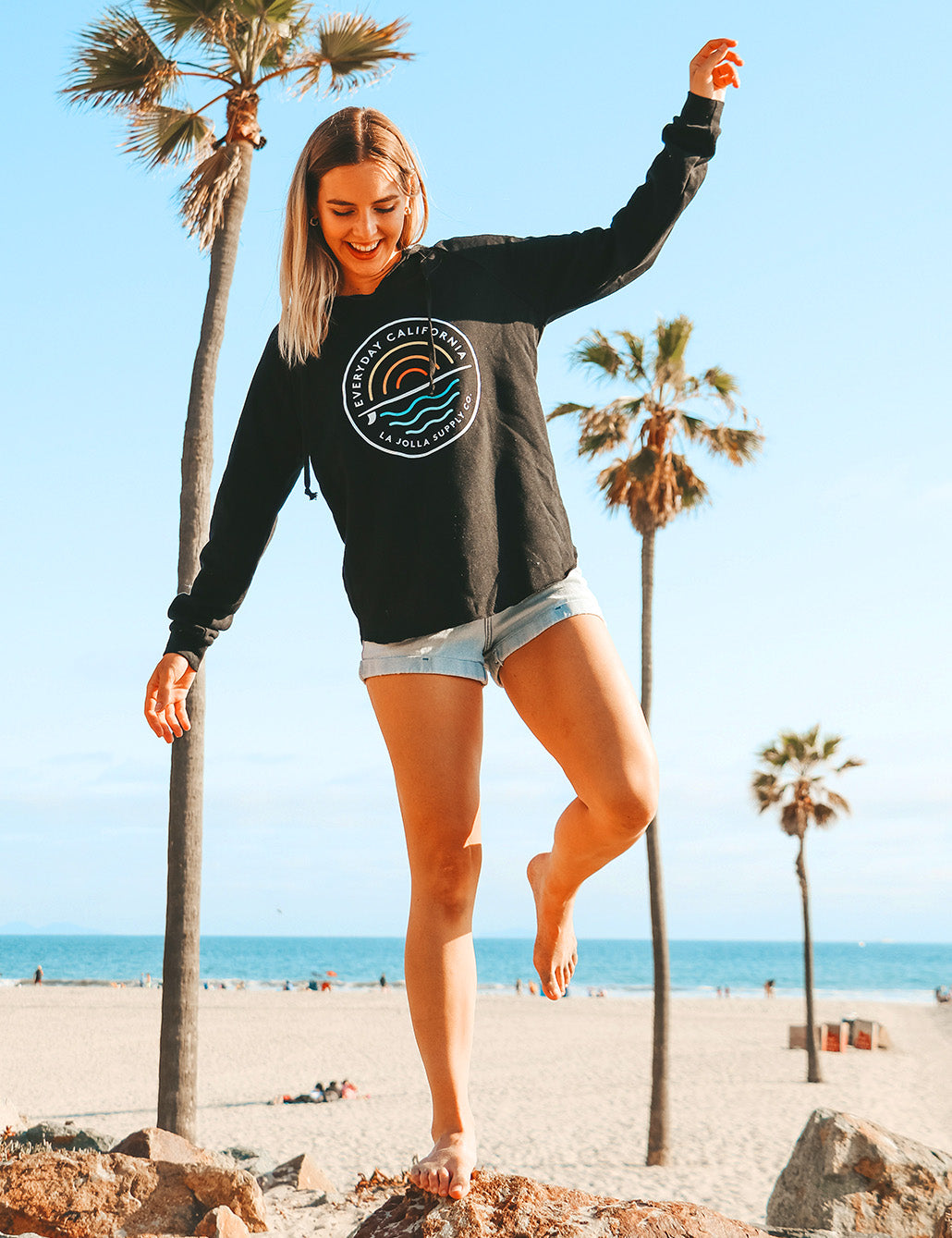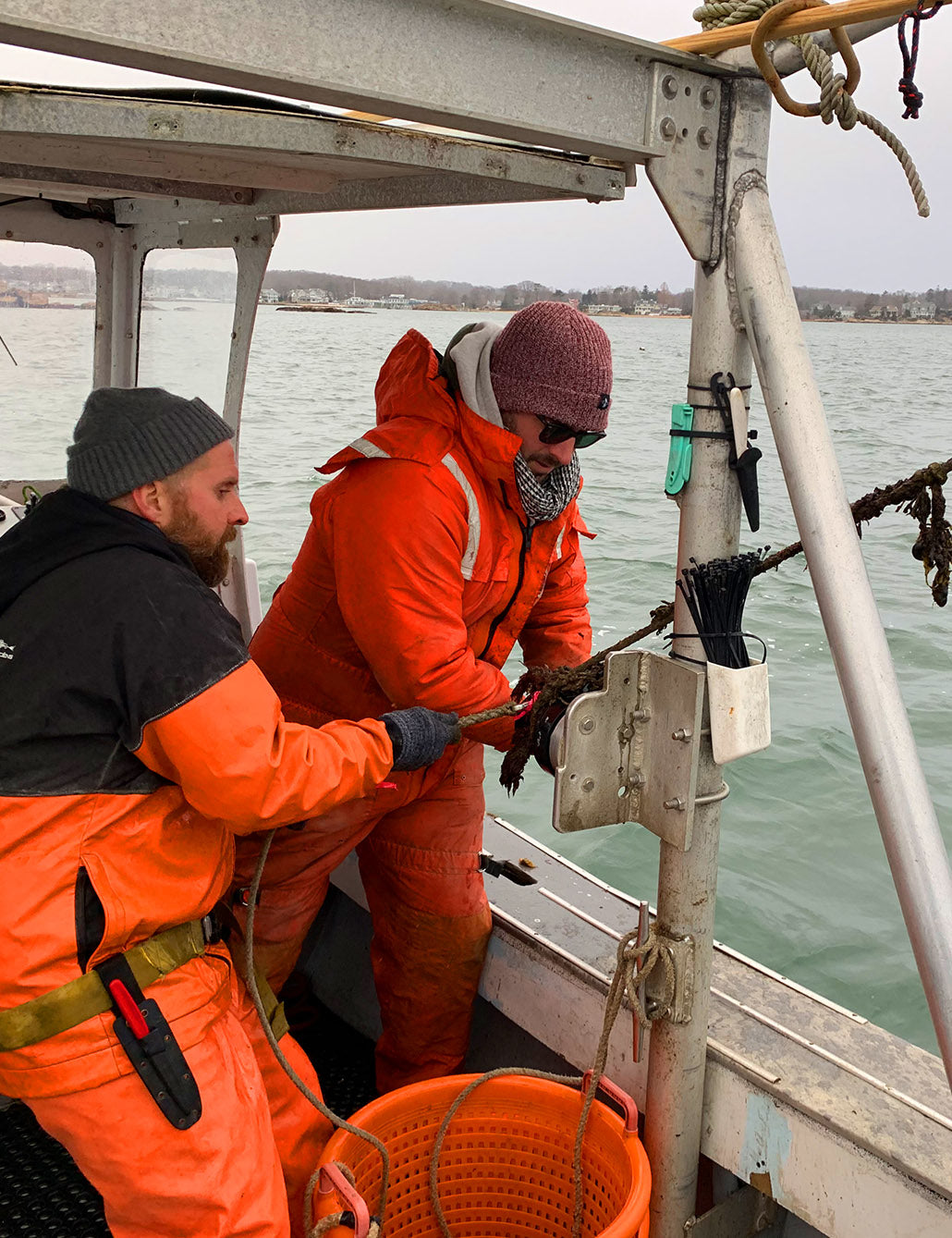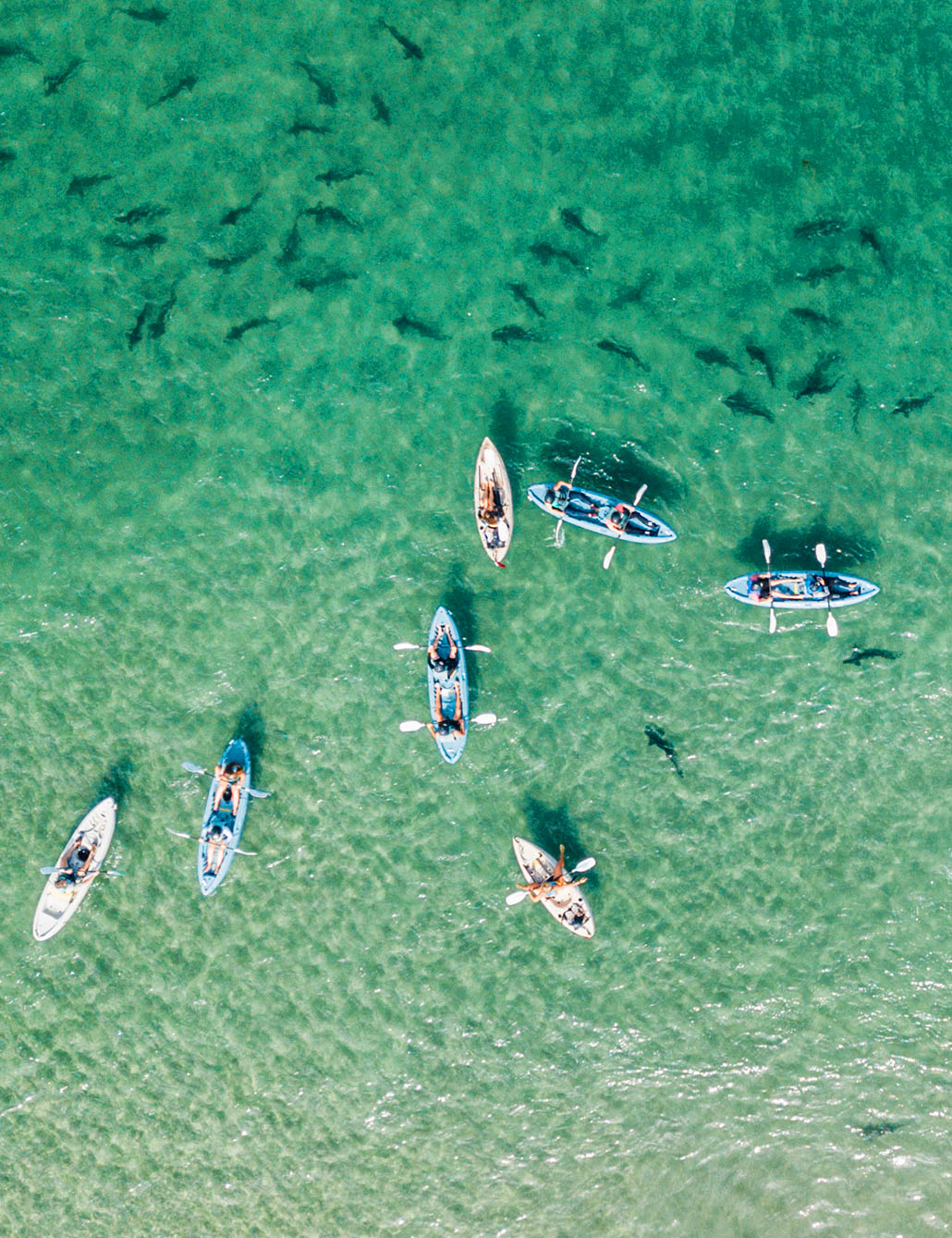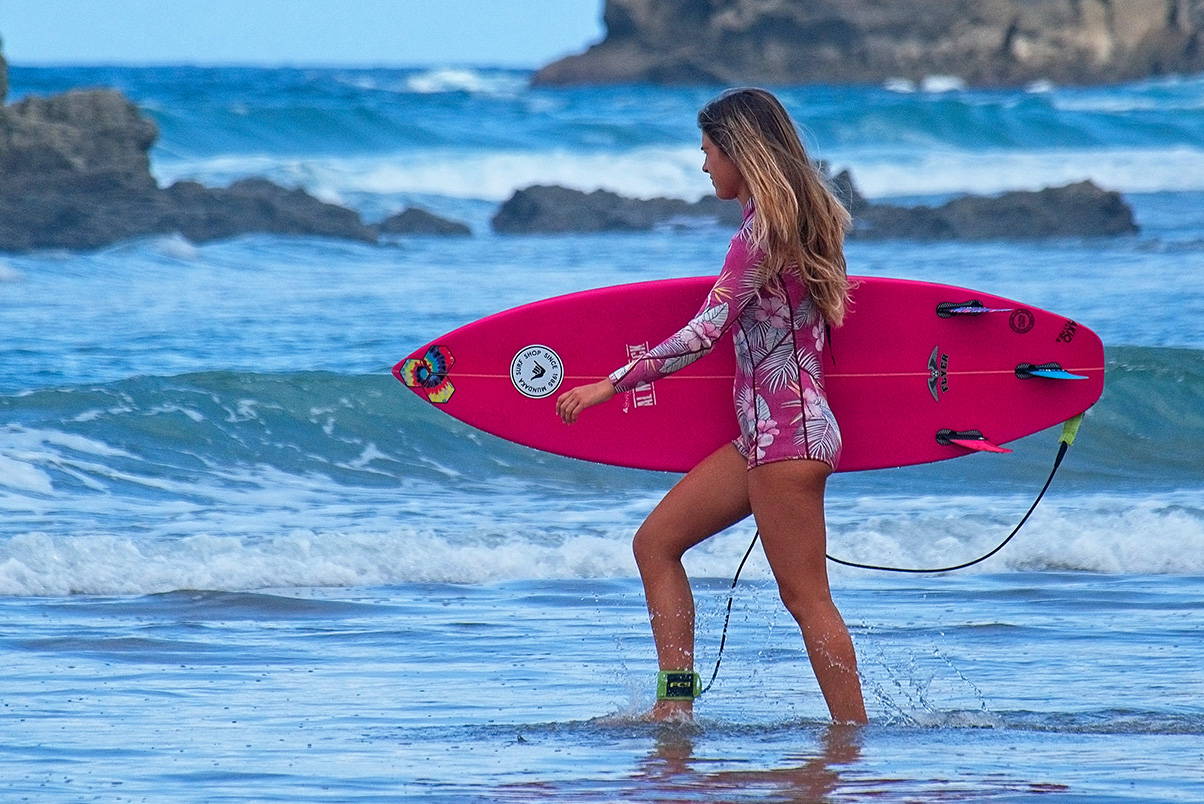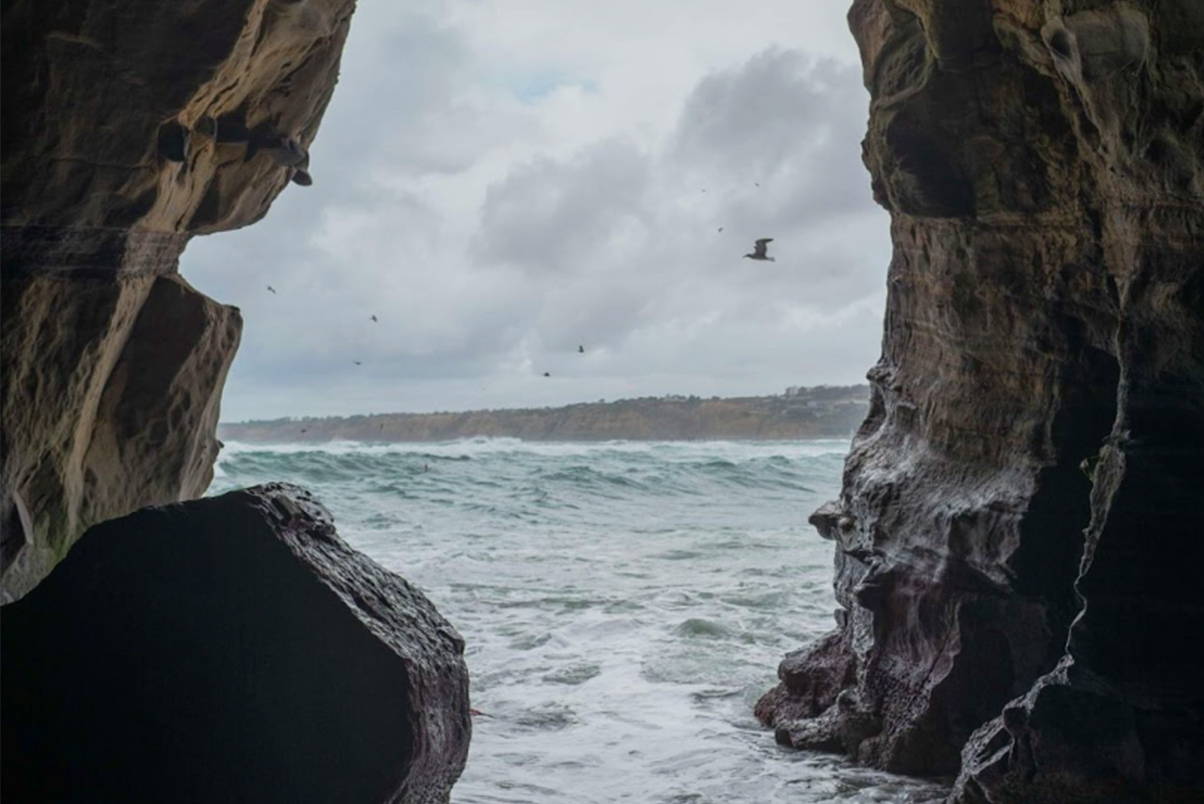
A Beginner’s Guide to Surf Fitness
If you're a beginner surfer, you may be wondering how to improve your surf fitness. While the best way to build up your surf fitness is by actually surfing, there are many exercises you can do at home that mimic surf movements.
In this guide, we'll explore these exercises in-depth to help you get ready for all aspects of surfing. We'll cover how to work your upper body muscles, improve your range of motion, and fine-tune your surf movements.
Before we dive into the details, let's address some of the most frequently asked questions about beginner surfers and surf fitness. And as always, feel free to reach out to the Everyday California team if you have any additional questions.
How Fit Do I Need to Be to Surf?
Surprisingly, you don't need to be extremely fit to start surfing. Our experienced coaches can teach anyone the basics, and we offer a range of surfboards to suit all skill levels and body types.
However, some level of fitness is recommended as the process of learning to surf can be demanding on the body. If you can perform a popup on land, you should be able to get to your feet on a surfboard.
It's important to note that surfing is a sport for all age groups, whether you're 15, 35, or 50+. With proper coaching and the right waves, anyone can learn to surf.
Will Being Fit Make Me Surf Better?
The answer is both yes and no - being fit can help with the learning process of surfing, but it's not a requirement for success. Having a level of fitness can help you meet the physical demands of surfing, making it easier to learn.
But even if you're not extremely fit, you can still learn to surf. At Everyday California, we coach in small groups to provide individualized attention to each student.
This personalized approach ensures that any differences in natural ability or fitness between students are offset, making it possible for anyone to learn to surf and ride their first waves.
Exercises to Help Your Surf Skill

Endurance
Endurance is crucial for surfers, as it allows them to stay out in the water for longer periods and catch more waves.
One of the best ways to improve endurance for surfing is by incorporating swimming into your workout routine. Since swimming also takes place in an aquatic environment with minimal oxygen, it forces the body to uptake and store oxygen more efficiently, similar to surfing.
The mammalian dive reflex, an innate physiological adaptation, helps conserve oxygen when submerged underwater by causing bradycardia, apnea, and increased peripheral vascular resistance.
Swimming is an excellent method of surf training as it trains the body to redistribute blood to vital organs while limiting oxygen consumption by non-essential muscle groups.
To improve endurance, pool swim workouts should include a combination of intervals for jogging, sprinting, and maintaining the fastest pace you can manage over a more extended period. Swimming in open water is also beneficial as it helps improve swim technique, paddleboard skills, and overall surf conditioning.
Lap Workouts
A lap workout is an effective way for surfers to improve their endurance. The workout should be designed to include both aerobic and anaerobic capacity exercises.
The laps should be broken into intervals of jogging and sprinting, as this helps to improve cardiovascular and respiratory endurance.
Warm-up: 200m freestyle, followed by a 30-second rest, then 200m freestyle at an aerobic pace, and a focus on technique.
Jog: 400m freestyle, followed by 30 seconds of rest, then 200m freestyle, and another 30 seconds of rest.
Sprint: Ten rounds of 25m freestyle with a 30-second rest between each round. This should be done at maximum effort to improve anaerobic capacity.
Cooldown: 200m freestyle
There are various lap workouts that surfers can do to improve their endurance, but it's essential to find the right workout that suits one's fitness level. The above workout is a great starting point that includes different intervals and sets that work on different aspects of endurance training.
Open Water Swims
While swimming laps in a pool is a common method for surf training, swimming in the ocean can be the ultimate training ground for surfers.
Open water swimming provides a dynamic environment with constantly changing waves and currents, giving you the opportunity to practice your surfing skills while building endurance.
Joining an open water swimming group, such as One With The Ocean, can provide you with weekly swim training sessions that can significantly improve your swimming and surfing abilities.
Moreover, the waves and currents in open water can provide a more challenging environment that allows you to work on balance, coordination, and timing- skills that are essential in surfing. If you live near the coast, try incorporating open water swims into your surf training regimen to help build your overall surf fitness.
Core & Stability
Surfing requires a strong core for two main reasons.
- A strong core allows you to maintain a healthy paddling posture that will help protect your spine and shoulders from injury.
If your job requires you to sit at a desk for extended periods, then maintaining a healthy posture when paddling will be quite challenging.
Weak spinal mobility, which is in a constant state of extension while paddling, is a common cause of injury among surfers. Strong abdominal and lower back muscles help maintain the challenging posture for extended periods without slouching, allowing for the proper recruitment of upper body muscles.
- A strong core helps improve our athletic capacity, allowing us to stand on our feet efficiently.
Beginner surfers, for instance, tend to rely too much on upper body strength when popping up into their surf stance, but this movement depends more on strong abdominal muscles and proper technique.
While upper body strength is still important, popping up is more about creating leverage than using strength. Developing a strong core is essential to maintain proper body posture, avoid injury, and improve efficiency in surfing.

Yoga
If you want to improve your core strength, posture, spinal mobility, joint health, and body mechanics for surfing, look no further than yoga. Here's how a few yoga asanas can help you enhance your surfing skills:
Cobra Pose
The Cobra pose is an excellent way to stretch your chest, shoulders, and abs, and it can also help you keep the nose of your surfboard from diving underwater when catching a wave in the prone position.
Child's Pose
The Child's pose is a relaxing position that opens up your posterior chain and gives you a deep stretch in your hips, quads, and ankles. It's an excellent way to bring all of your weight to the back of your surfboard and come to a controlled stop after riding a wave to the beach in the prone position.
Plank
Plank pose is great for improving your core strength and building your arm and shoulder muscles. You'll need to use plank pose while paddling your surfboard through oncoming whitewater waves to make it out to the lineup. Additionally, being able to push up into a plank will improve your ability to "pop-up" when standing on a surfboard.
Warrior II
Warrior II is a deep hip and groin opener that can improve your balance on a surfboard. Although it's not the exact stance you'll maintain while surfing, it's similar and can help you get accustomed to standing in that position.
Incorporating yoga into your surfing routine can help you become a better surfer by improving your physical abilities and mental focus. So why not give it a try and see how it can take your surfing to the next level!
Functional Excercises
If you want to stay on your surfboard for as long as possible, you need to improve your balance and coordination. Here are some tips on how to improve your balance for surfing:
Strengthen Your Legs and Abdominal Muscles
To maintain balance while surfing, you need strong leg and abdominal muscles. Try doing squats, lunges, and leg raises to build up your leg muscles, and planks and crunches to strengthen your abs.
Coordinate Different Muscle Groups to Work Together
Surfing requires you to coordinate different muscle groups to work together. You can improve this coordination by doing single leg balance drills, double leg strength exercises, pushup position holds, balance ball exercises, and dynamic movements.
By incorporating these exercises into your routine, you'll be able to promote better speed, balance, and overall athletic ability, which will undoubtedly help you become a better surfer.
Remember, balance is key when it comes to surfing. So take the time to work on your balance, and you'll be rewarded with a more enjoyable and successful surfing experience.

Arm & Back Strength
While surfing may seem like it's all about standing on the board, the majority of your time in the water is actually spent paddling. This means you need to have strong and mobile arms and shoulders to propel your board forward and catch waves.
Here are some tips on how to develop arm and shoulder strength for surfing:
Focus on the Posterior Shoulder and Upper Back Muscles
The most important muscles to strengthen for surfing are located in the posterior shoulder (scapula) and upper back. These muscles include the rotator cuffs, scapula stabilizers, latissimus dorsi, and trapezius. By targeting these muscles, you can improve your power and endurance while paddling.
Incorporate Resistance Training
Resistance training is a great way to build arm and shoulder strength for surfing. You can use weights, resistance bands, or bodyweight exercises to target these muscles. Try exercises like rows, pull-ups, and push-ups to build strength and endurance.
Don't Forget About Mobility
In addition to strength, you also need to have good mobility in your arms and shoulders to surf effectively. Incorporate stretching and mobility exercises into your routine to ensure you are able to move your arms and shoulders through their full range of motion.
By developing arm and shoulder strength and mobility, you can improve your paddling power and catch more waves. So don't neglect these important muscles in your surf training routine
High Rep Warm-ups
Some examples of high-rep exercises include band pull-aparts, face pulls, and arm circles. These exercises are easy to perform and require minimal equipment, making them ideal for warm-ups before hitting the waves.
Final Thoughts
If you want to take your surfing to the next level, incorporating these exercises into your routine will help you build the strength and endurance necessary to perform better on the water.
While strength training is important, it's also essential to get out there and surf as much as possible. With consistent practice, you'll find yourself catching more waves and improving your overall health.
To sum up, here are some tips and considerations to keep in mind as you work to improve your surf skills:
- Incorporate these exercises into your routine to build the necessary strength and endurance for surfing.
- Maintain good form and progress gradually to prevent injury.
- Remember that there is a point of diminishing returns when it comes to strength training.
- Work on your conditioning with paddling intervals in the water.
- Most importantly, get out there and surf as much as possible to improve your skills on the water.
By following these tips and incorporating these exercises into your routine, you'll be well on your way to becoming a stronger and more skilled surfer. If you’re looking for some more specific direction, check out our private surf lessons. Otherwise, we’ll see you on the beach with our La Jolla surfboard rentals!


